India stands among the minority of nations worldwide that strictly prohibits dual citizenship, a policy rooted in constitutional provisions, security concerns, and historical circumstances. This comprehensive analysis examines the complex reasons behind India’s stance and evaluates the realistic prospects for change in the near future versus the likelihood of permanent prohibition.
Global Context and India’s Position
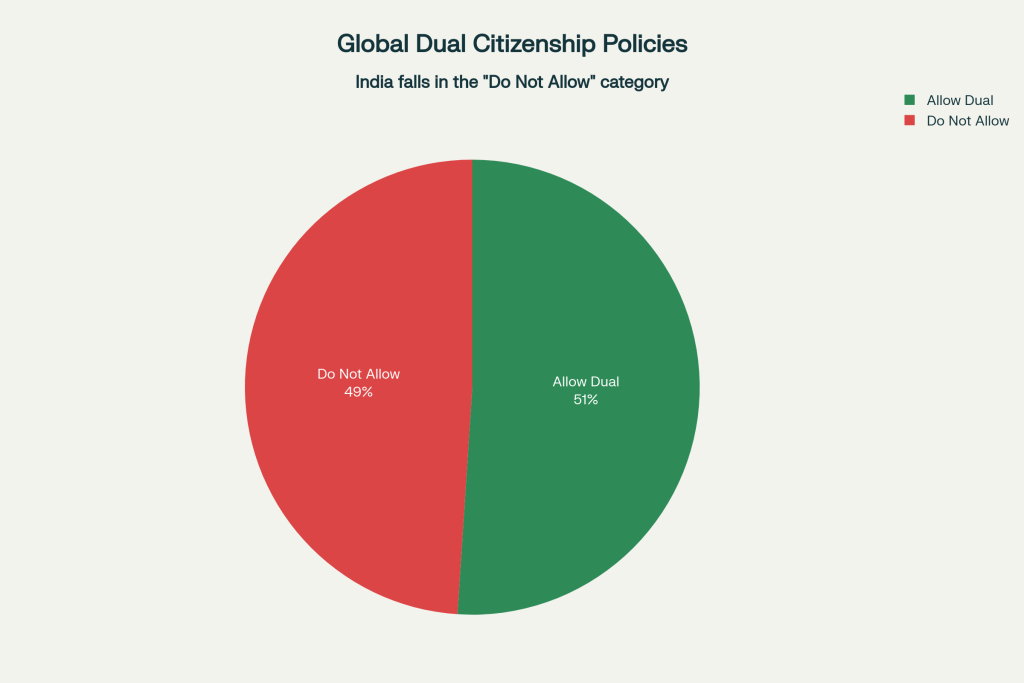
The global landscape of citizenship policies reveals an almost even split between nations that permit and prohibit dual citizenship. Among 96 major countries analyzed, 49 (51%) allow dual citizenship while 47 (49%) do not, placing India firmly in the restrictive category alongside nations like China, Japan, and Singapore. This near-equal division demonstrates that India’s position, while restrictive, is not uncommon in the international community.
The Indian Diaspora Challenge
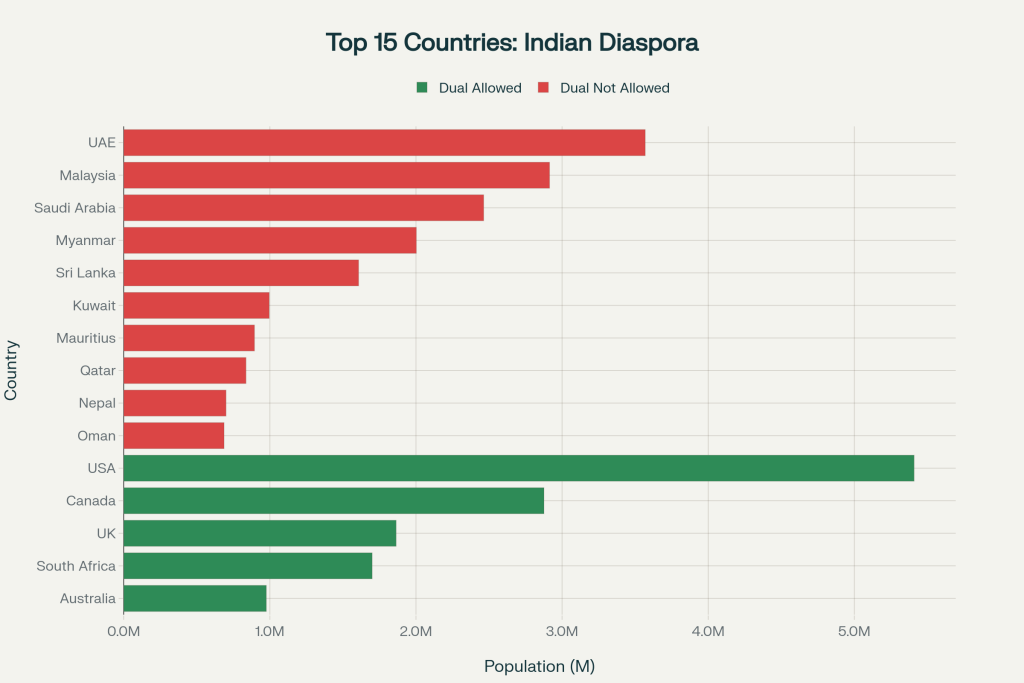
India’s restrictive dual citizenship policy becomes particularly significant when considering the scale of its global diaspora. With over 35.4 million overseas Indians spread across 207 countries, India possesses the world’s largest diaspora population. The United States hosts the largest Indian population abroad (5.4 million), followed by the UAE (3.6 million), and Malaysia (2.9 million). Notably, several countries with substantial Indian populations, including the USA, Canada, and the UK, do permit dual citizenship, creating a practical disconnect between diaspora needs and Indian policy.
Constitutional and Legal Foundations of Prohibition
The prohibition of dual citizenship in India rests on firm constitutional and legal foundations established at the nation’s inception. Article 9 of the Indian Constitution explicitly states that any person who voluntarily acquires citizenship of a foreign state ceases to be an Indian citizen. This provision was intentionally crafted by the Constituent Assembly, which collectively voted against incorporating dual citizenship in the aftermath of Partition.
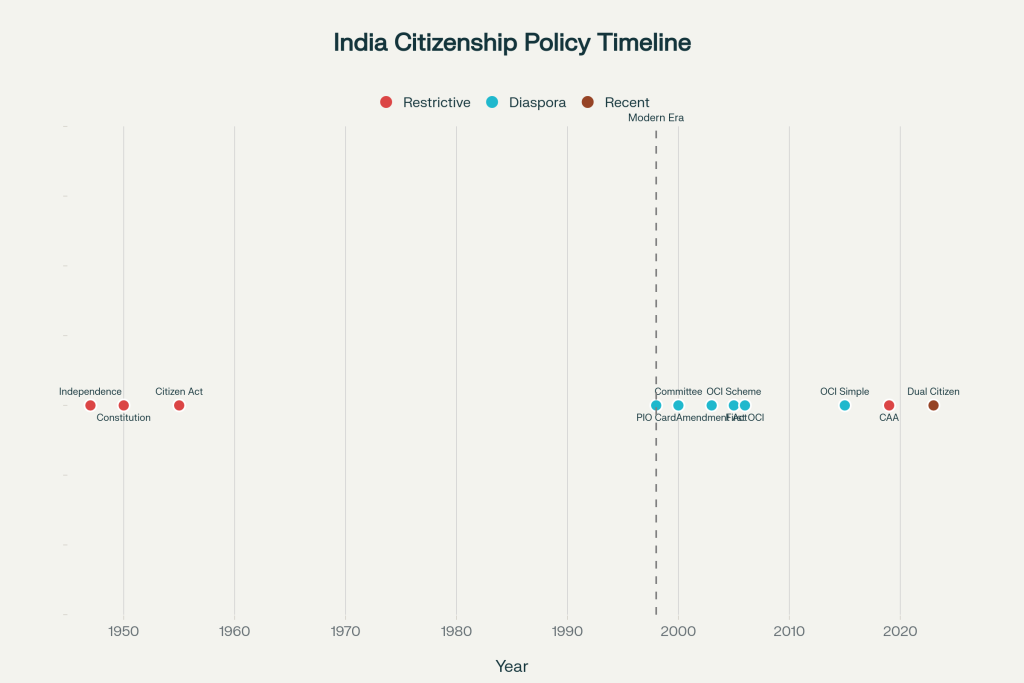
The evolution of India’s citizenship policy demonstrates a consistent trajectory toward single citizenship since independence. The Citizenship Act of 1955 further codified these restrictions, establishing that acquisition of foreign citizenship automatically results in the termination of Indian citizenship. This legal framework has remained largely unchanged for over seven decades, reflecting deep-seated constitutional principles about national allegiance and sovereignty.
The automatic termination provision creates legal complexities that distinguish India from many other nations. Unlike countries such as the UK or Netherlands, which can revoke citizenship from dual nationals without creating statelessness, India’s prohibition means that any attempt to strip citizenship would render individuals stateless, potentially violating international norms.
Historical Context and Security Rationales
India’s rejection of dual citizenship stems from multiple historical and security considerations that shaped post-independence policy formation. The trauma of Partition in 1947 created deep concerns about divided loyalties and the potential for foreign influence in domestic affairs. Leaders like Mahatma Gandhi and Jawaharlal Nehru emphasized the need for unified national identity and undivided allegiance to the newly independent nation.
Security concerns have consistently influenced policy decisions throughout India’s history. The High-Level Committee on the Indian Diaspora, chaired by L.M. Singvi in 2000-2002, extensively deliberated security implications while considering dual citizenship proposals. Committee interviews revealed particular anxiety about “dual loyalty” scenarios and the potential for mass expulsion of dual citizens during international conflicts.
Historical precedents reinforced these concerns, particularly the support provided by diaspora communities to militant movements. The backing of Sikh separatist groups by overseas Sikh communities in the 1980s exemplified the security risks associated with divided loyalties. More recently, cases involving individuals like Gurpatwant Singh Pannun, who holds dual US-Canadian citizenship while being designated a terrorist by India, illustrate ongoing security challenges.
The specter of terrorism has also shaped policy discussions. India’s experience with foreign terrorist fighters and the complexities of dealing with citizens who join organizations like ISIS highlight the legal and security complications that dual citizenship could create. Unlike countries that can revoke citizenship from dual nationals involved in terrorism, India’s single citizenship framework provides no such flexibility while avoiding statelessness concerns.
The Overseas Citizenship of India Compromise
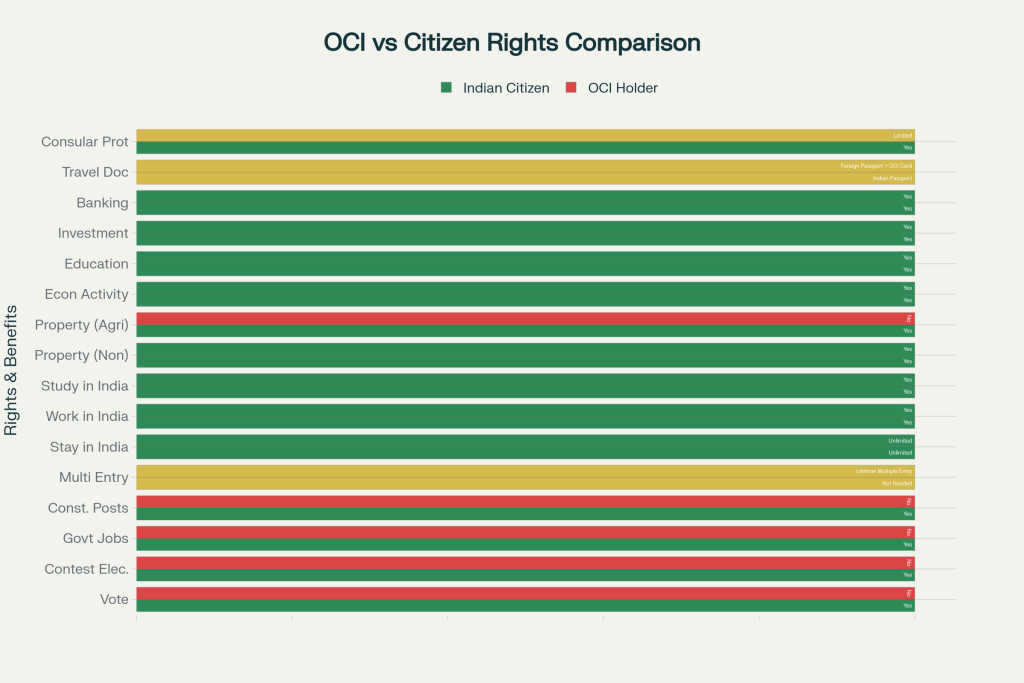
Recognizing diaspora demands while maintaining constitutional restrictions, India introduced the Overseas Citizenship of India (OCI) scheme in 2005 as a compromise solution. This status provides extensive rights short of full citizenship, including lifetime multiple-entry visas, unlimited stay and work rights, and equal treatment in economic activities. However, OCI holders cannot vote, contest elections, hold government positions, or purchase agricultural property.
The OCI scheme represents a careful balance between diaspora engagement and security concerns. As clarified by official government notices, “holding an OCI card in no way entitles its holders to claim the status of dual citizenship”. This framework allows India to maintain its constitutional prohibition while providing practical benefits to the diaspora community.
Current Political Discourse and Future Prospects
Recent statements by External Affairs Minister S. Jaishankar provide the most authoritative indication of India’s current stance on dual citizenship. In December 2023, Jaishankar acknowledged that while there are “security and economic challenges” in providing dual citizenship, “the debate is still alive”. His comments suggest that the government remains open to discussion but identifies significant obstacles to implementation.
Jaishankar specifically highlighted three key challenge areas: security implications, economic complications, and the question of which countries’ citizens should be eligible for dual citizenship. These concerns reflect the complex considerations that any future policy change would need to address.
Arguments Favoring Dual Citizenship
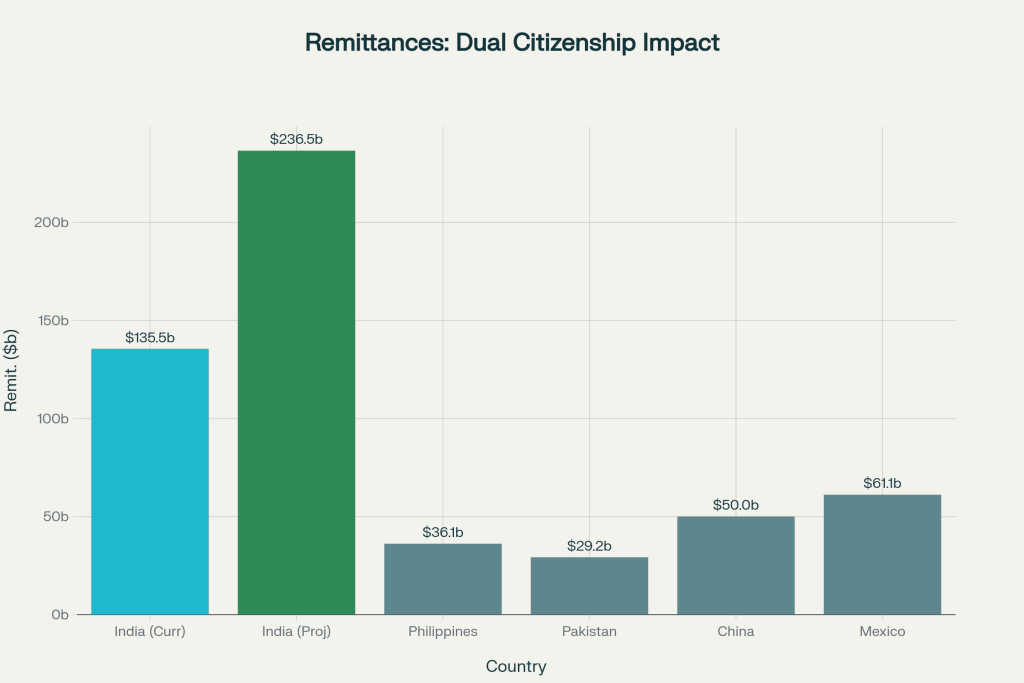
Economic arguments for dual citizenship carry significant weight. Research indicates that countries allowing dual citizenship typically see substantially higher remittance flows from their diaspora communities. India currently receives approximately $135.46 billion in remittances annually, making it the world’s largest recipient. Studies suggest that implementing dual citizenship could increase remittances by 74.6%, potentially adding over $101 billion annually to the Indian economy.
Beyond remittances, dual citizenship could facilitate increased foreign direct investment, brain circulation, and technology transfer. The emotional connection maintained through dual citizenship often translates into greater diaspora investment in homeland development projects. Given India’s aspirations to become a developed economy, such capital flows could prove crucial.
Cultural and demographic factors also support reconsideration. Second and third-generation diaspora Indians often feel disconnected from India due to citizenship restrictions, leading to gradual cultural assimilation in host countries. Dual citizenship could help maintain these connections across generations, strengthening India’s soft power and cultural influence globally.
Arguments Against Dual Citizenship
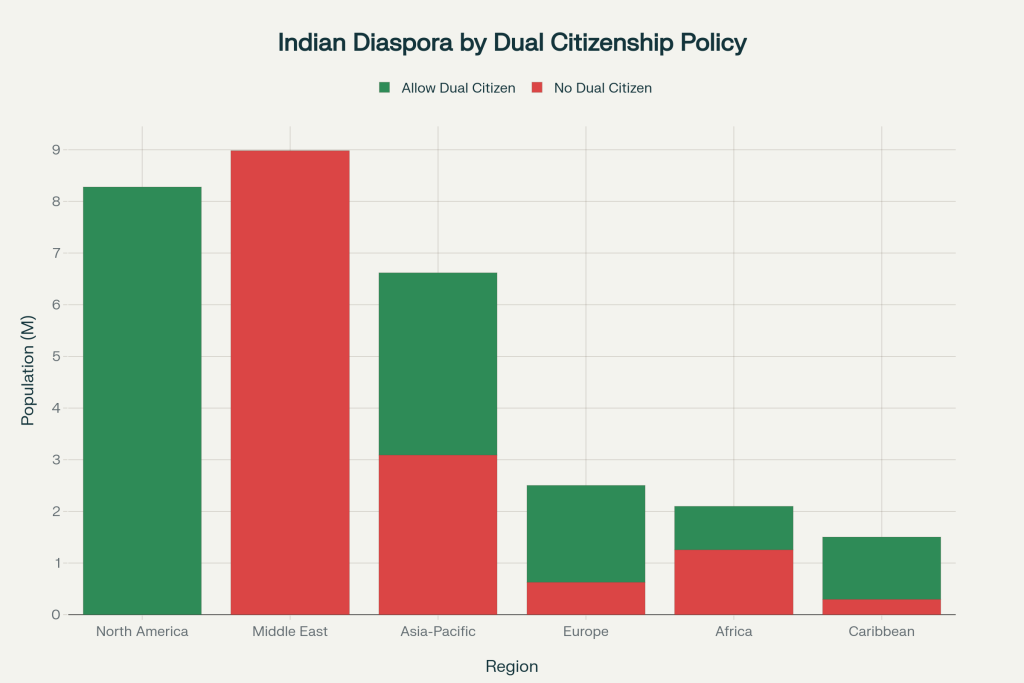
Despite economic incentives, formidable arguments exist against implementing dual citizenship. Constitutional constraints represent the primary obstacle, as Article 9 would require amendment—a complex process requiring broad political consensus. Democratic legitimacy concerns center on the appropriateness of allowing foreign citizens to participate in Indian political processes.
Security implications remain paramount in government thinking. The concern about creating a “comprador class” of individuals who might exploit dual nationality for personal gain while maintaining questionable loyalty to India reflects deeper anxieties about foreign influence. The ability of hostile nations to potentially influence Indian politics through dual citizens represents a strategic vulnerability that security agencies continue to emphasize.
Administrative complexity adds another layer of concern. Managing dual citizenship relationships with nearly 50 countries that currently allow such arrangements would require extensive legal frameworks, bilateral agreements, and administrative mechanisms. The potential for diplomatic complications when dual citizens face legal issues abroad could strain India’s international relationships.
Regional Analysis and Strategic Considerations
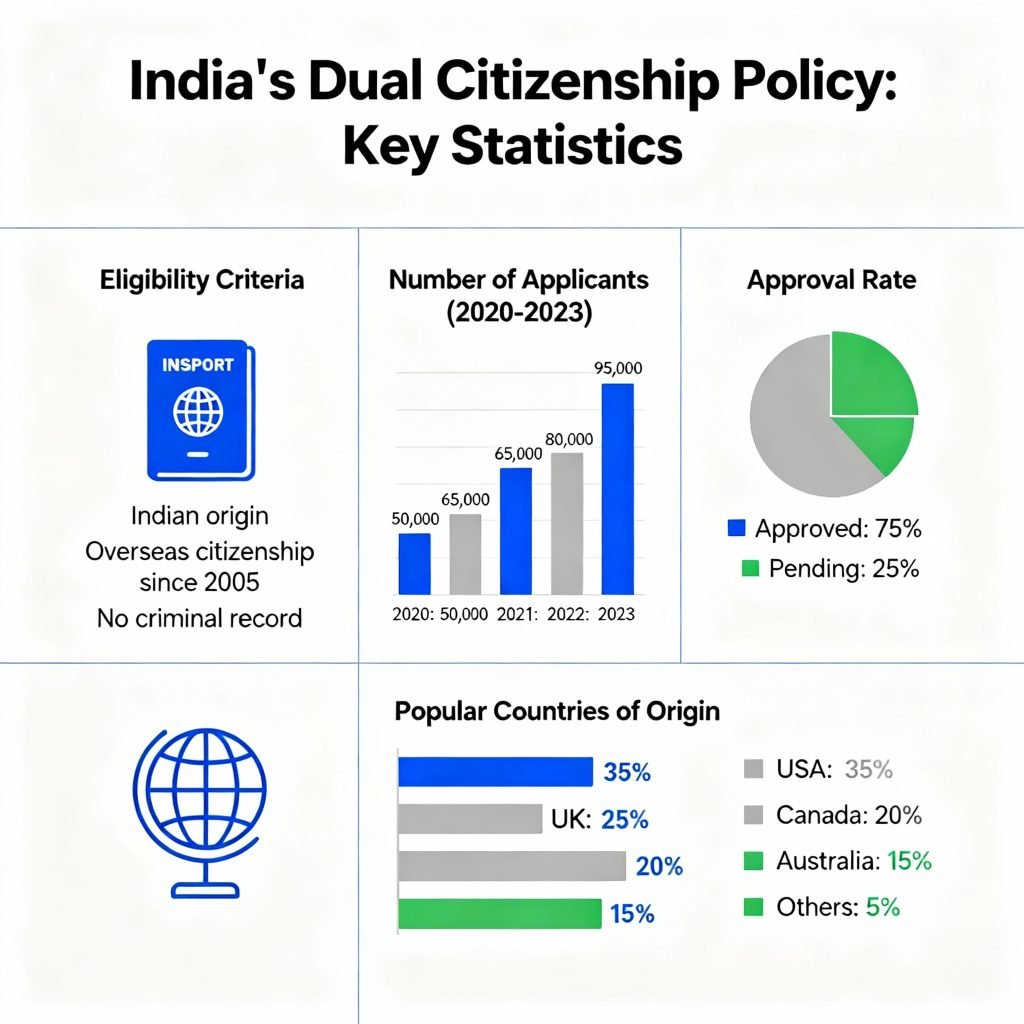
The regional distribution of India’s diaspora reveals strategic implications for any dual citizenship policy. The largest concentrations exist in the Middle East (8.98 million) and North America (8.28 million), representing fundamentally different policy environments[regional analysis]. Middle Eastern countries uniformly prohibit dual citizenship, while North American countries generally allow it, creating varied contexts for policy implementation.
This geographic distribution suggests that any dual citizenship framework would need to be selective rather than universal. The government’s apparent consideration of country-specific eligibility criteria reflects recognition of these varied relationships and security implications.
Economic Impact Assessment
The economic case for dual citizenship extends beyond remittances to encompass broader development benefits. Countries that have implemented dual citizenship policies typically experience increased diaspora engagement in homeland development, enhanced trade relationships, and greater technology transfer. For a country like India, seeking to leverage its human capital for economic development, these benefits could prove transformational.
However, economic benefits must be weighed against potential costs. Managing dual citizenship relationships, potential tax complications, and the administrative burden of expanded diaspora services would require significant government investment. The question remains whether economic gains would justify these costs and associated risks.
Assessment of Future Possibilities
Very Soon Scenario (Next 5-10 Years): Low Probability
Several factors make implementation in the near term unlikely. Constitutional amendment requirements represent a significant hurdle, requiring broad political consensus that currently appears absent. Security establishment resistance, evidenced by decades of consistent policy maintenance, suggests institutional inertia against change.
Political calculations also weigh against near-term implementation. Dual citizenship remains a niche issue with limited domestic political salience compared to more pressing economic and social challenges. The ruling party’s current focus on other citizenship-related controversies, such as the Citizenship Amendment Act, suggests limited bandwidth for additional constitutional changes.
International complications add another constraint. Rising geopolitical tensions, particularly with countries hosting large Indian diaspora populations, make this an inauspicious time for citizenship policy liberalization that could complicate diplomatic relationships.
Never Scenario: Moderate Probability
The permanence of India’s dual citizenship prohibition appears more likely than near-term change, but not inevitable. Deep constitutional and cultural commitments to single citizenship, reinforced by seven decades of consistent policy implementation, suggest strong institutional resistance to change.
Security concerns are unlikely to diminish given India’s challenging geopolitical environment and ongoing concerns about foreign influence. The rise of diaspora-supported separatist movements and international terrorism provides continuing justification for restrictive policies.
However, absolute permanence seems unlikely given evolving global norms and India’s increasing international integration. The government’s acknowledgment that “the debate is still alive” suggests some openness to future reconsideration under different circumstances.
Most Likely Scenario: Gradual Evolution
The most probable path involves incremental expansion of OCI benefits rather than fundamental policy change. This approach allows India to address diaspora demands while maintaining constitutional restrictions and security protocols. Potential enhancements might include expanded property rights, simplified renewal procedures, or limited political participation rights at local levels.
Such evolutionary change would align with India’s typically gradual approach to major policy shifts while avoiding constitutional amendment requirements. The OCI framework provides sufficient flexibility for substantial expansion without crossing fundamental red lines regarding dual citizenship.
Conclusion
India’s prohibition of dual citizenship reflects deep-seated constitutional principles, security concerns, and historical experiences that continue to shape policy thinking today. While economic arguments for change carry significant weight, supported by potential remittance increases of $101 billion annually, constitutional, security, and administrative obstacles remain formidable.
The most realistic assessment suggests that fundamental change to allow dual citizenship remains unlikely in the foreseeable future, with less than 30% probability of implementation within the next decade. However, gradual expansion of OCI benefits appears more probable, potentially providing diaspora communities with enhanced rights while maintaining India’s core single citizenship framework.
External Affairs Minister Jaishankar’s acknowledgment that the debate remains “alive” indicates continued government consideration, but the emphasis on “security and economic challenges” suggests significant skepticism about implementation. For India’s vast diaspora, the OCI framework likely represents the maximum accommodation available under current constitutional and political constraints, making enhanced OCI benefits rather than dual citizenship the most promising avenue for improved diaspora engagement.
The question of dual citizenship for India thus remains not whether it will happen “very soon” or “never,” but rather how existing frameworks can evolve to better serve diaspora needs while respecting constitutional limitations and security requirements that have shaped Indian citizenship policy for over seven decades.






